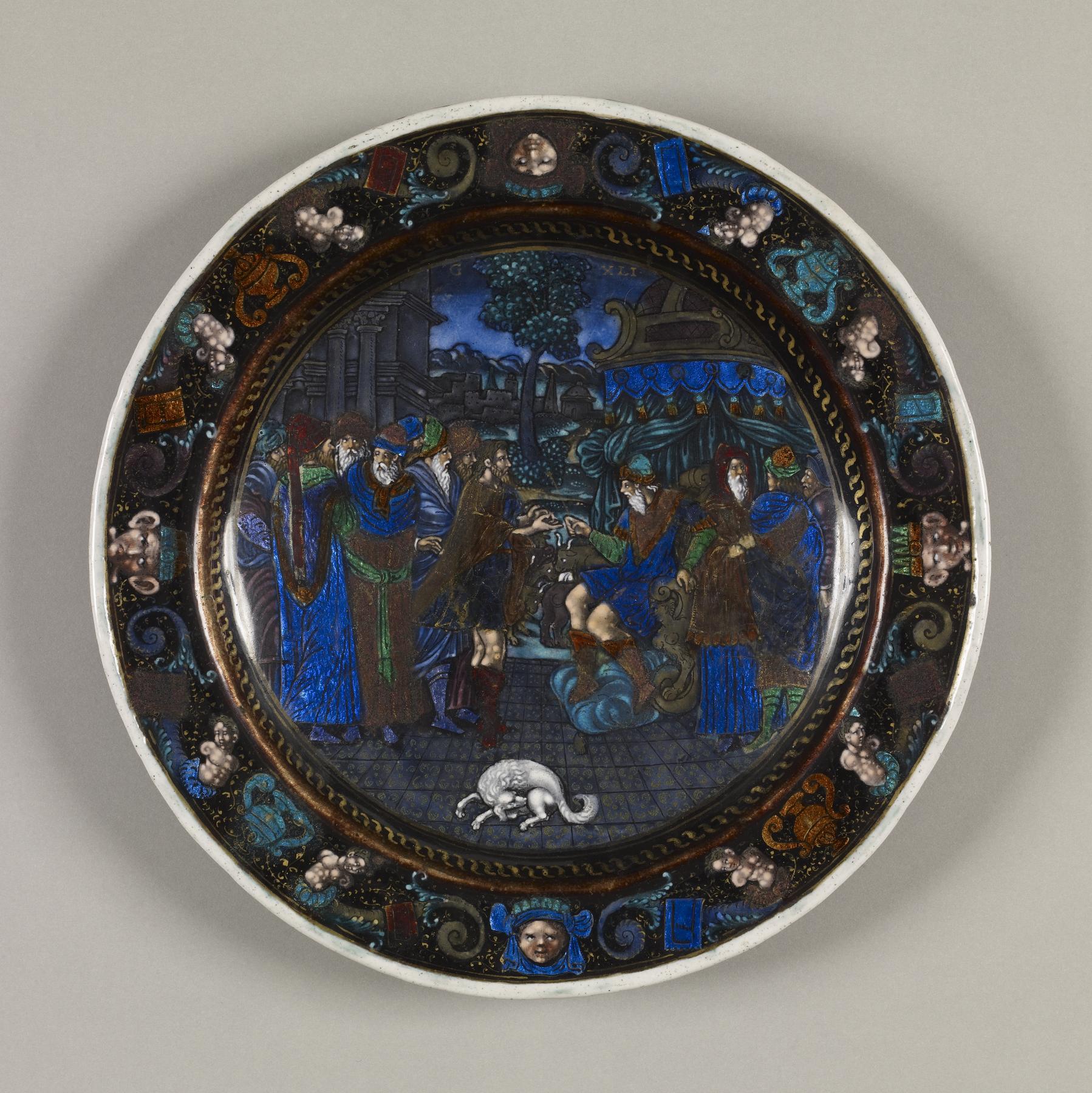Joseph Interpreting the Pharaoh's Dream
(Renaissance Europe )
Joseph, a bearded young man, bare-headed and wearing a short tunic, stands before the Pharaoh of Egypt as he interprets his dreams. Ten magicians and wise men of Egypt crowd around, according to Chapter 41 of Genesis. The magicians are dressed in oriental costumes and wear turbans. Four of them have hoary beards, as does the Pharaoh, who, holding a scepter, rests his feet on a cushion and supports his left hand on a throne decorated with sphinxes. Above the Pharaoh is a domed canopy decorated with ribs and scroll ornament, its edge trimmed with a tasseled lambrequin. A dog lies curled up on the tiled floor in the foreground. In the left background is a building, probably an arch of triumph, with twin columns of colossal order. In the middle, beyond the groups of people, appear the seven cows of the Pharaoh's dream, a tree, a town and mountains. The source of the scene is a woodcut by Bernard Salomon in "Biblia Sacra," Lyons, de Tournes, 1556, p. 23.
The rim is decorated with four repetitions of an amphora flanked by armless siren-busts each terminating in a curled leafy tail. Between each such group is a grotesque mask, alternately male and female.
On the reverse a rosette is at the center, inscribed with the initials C. I. Strapwork with alternating grotesque masks and bunches of grapes or other fruit are applied on a cusped octofoil with a beaded border. On the rim is a wreath of laurel leaves with twice three fillets. Between the strapwork and the wreath are scroll patterns.
Inscription
Provenance
Provenance (from the French provenir, 'to come from/forth') is the chronology of the ownership, custody, or location of a historical object. Learn more about provenance at the Walters.
Baron Gustave de Rothschild, Paris [date and mode of acquisition unknown]; [the plate then descended through his daughter to his grandchildren who eventually sold it and three others of the same series]; Sale, Christie's, London, November 26-7, 1919, lot 63; Henry Walters, Baltimore, 1925, by purchase; Walters Art Museum, 1931, by bequest.
Conservation
| Date | Description | Narrative |
|---|---|---|
| 8/28/1975 | Examination | technical study |
Geographies
France, Limoges (Place of Origin)
Measurements
Diam: 7 7/8 in. (20 cm)
Credit Line
Acquired by Henry Walters, 1925
Location in Museum
Not on view
Accession Number
In libraries, galleries, museums, and archives, an accession number is a unique identifier assigned to each object in the collection.
In libraries, galleries, museums, and archives, an accession number is a unique identifier assigned to each object in the collection.
44.182






